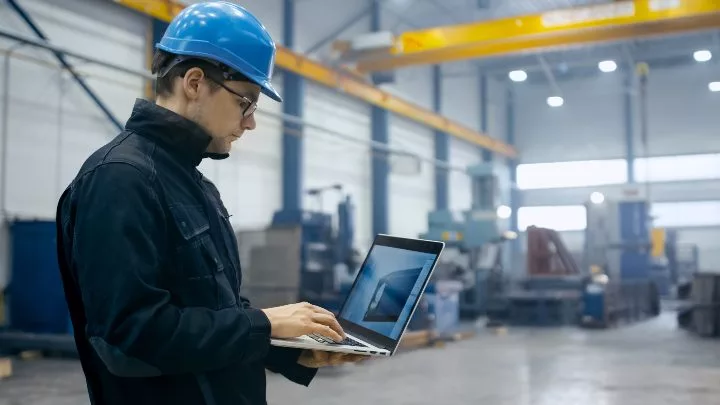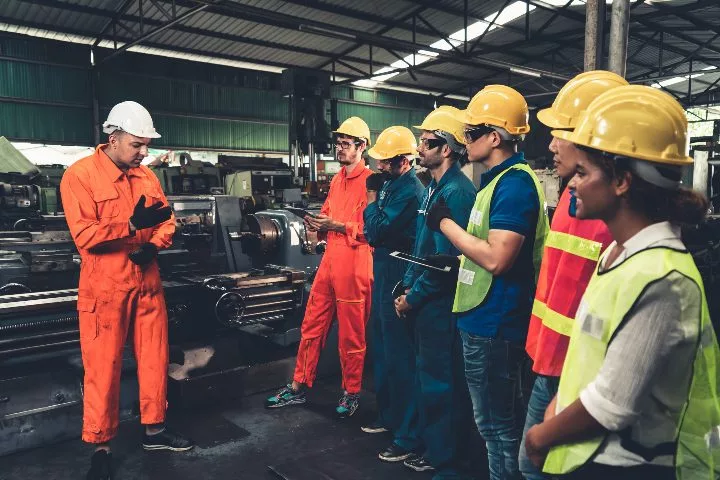Maintenance management is a comprehensive system of processes designed to protect, maintain, and optimize the physical assets and resources of a company. It ensures that equipment, facilities, and infrastructure remain in good working condition, which is essential for operational efficiency and safety. By effectively tracking equipment, workers, contractors, and associated costs, maintenance management systems help companies reduce repair expenses, improve inspection efficiency, and ensure both employees and machinery operate safely and productively. These systems are vital for maintaining consistent performance across various industries. Maintenance management software also plays a crucial role in minimizing equipment failure and production downtime. It supports the scheduling of preventive maintenance tasks, helping organizations avoid unexpected breakdowns and costly disruptions. The core objective of any maintenance management system is to reduce resource waste by ensuring that all operations run efficiently. Through a combination of manual practices and computerized tools, these systems help maintain reliability and availability of physical assets at all times. Today, maintenance management relies on a mix of traditional methods and modern technology, making it more efficient and adaptable than ever before. For individuals outside the maintenance industry, equipment failure might just be an inconvenience—like a delayed train or a short power outage. However, for large companies, unplanned equipment failure can lead to significant financial losses and even safety risks. According to Aberdeen Strategy and Research, unplanned equipment downtime can cost a company up to $260,000 per hour in lost revenue. This is exactly what maintenance management systems aim to prevent. Industries such as transportation, IT, engineering, oil and gas, energy, and healthcare rely heavily on maintenance management software to avoid substantial revenue loss. But there’s more to it than just saving money. Here are five key reasons why maintenance management is so important: One of the main benefits of maintenance management is its ability to reduce unplanned equipment downtime. With proper planning and scheduling, most downtime becomes predictable, allowing teams to prepare and respond efficiently. This helps avoid costly production halts and keeps operations running smoothly. Regular maintenance extends the life of machinery, reducing the need for frequent replacements. This not only saves money but also minimizes waste. Well-maintained equipment can last significantly longer than poorly maintained alternatives, making it a smart investment for businesses of all sizes. When equipment is functioning properly, employees can focus on more strategic tasks rather than dealing with repairs. This leads to higher productivity and better use of human resources. Additionally, fewer emergency repairs mean less stress for maintenance teams and a safer work environment. Many industries have strict regulations regarding safety, environmental standards, and equipment performance. Maintenance management systems help companies stay compliant by recording inspections, generating reports, and ensuring all procedures are followed. This reduces the risk of fines and legal issues. In some industries, faulty equipment can lead to serious injuries or even fatalities. Proper maintenance management not only prevents accidents but also ensures that safety protocols are followed. This makes it a critical component of workplace safety, especially in high-risk environments like manufacturing or construction. Understanding the different types of maintenance management can help organizations choose the best approach for their needs. Here are five common types, from simplest to most advanced: This is the most basic form of maintenance, where equipment is used until it breaks down. While this method was common in the past, it is now considered inefficient due to high repair costs and potential downtime. Time-based maintenance involves scheduled inspections and maintenance tasks based on a calendar. While effective, it may not always be the most efficient, as it doesn’t account for actual equipment conditions. This type of maintenance uses sensors and monitoring tools to assess the real-time condition of equipment. It allows for timely interventions, preventing failures before they occur. Predictive maintenance uses data analysis and machine learning to forecast when equipment might fail. This proactive approach helps reduce unexpected breakdowns and optimize maintenance schedules. Prescriptive maintenance takes predictive maintenance a step further by providing actionable recommendations for repairs. It not only predicts failures but also suggests solutions, making maintenance more efficient and effective. Some maintenance tasks may need to be deferred due to limited resources, but prioritizing urgent needs ensures that critical operations remain unaffected. Inspections are a fundamental part of any maintenance management system. Whether performed by humans or autonomous systems like drones, they help identify potential issues before they become major problems. There are several types of maintenance inspections, each serving a unique purpose: Safety inspections ensure that all operations meet safety standards. They include checking first-aid kits, harnesses, and other safety equipment to protect workers and prevent accidents. These inspections test backup systems and protective devices to ensure they function correctly if a failure occurs. They help verify that secondary systems can take over in emergencies. Interior inspections cover everything from checking air filters to examining plumbing and electrical systems. They help maintain a safe and functional environment inside buildings. Exterior inspections focus on assessing the condition of windows, walls, roofs, and other external structures. They help identify damage or wear that could lead to future issues. Drones are revolutionizing the inspection process by offering a safer and more efficient alternative to traditional methods. They can access hard-to-reach areas and provide high-quality data using advanced sensors and cameras. For example, the Elios 3 drone is equipped with LiDAR technology, enabling real-time 3D mapping. It’s ideal for inspecting confined spaces and capturing detailed information that would be difficult to obtain manually. While drones may have a high initial cost, they offer long-term savings by reducing liability, improving access, and lowering inspection costs. As drone technology becomes more affordable, its use in maintenance will continue to grow. [Case study: Elios 3's 3D Mapping Helps City of Lausanne in Water Department Inspections] Maintenance management software is being used across various industries to improve efficiency and reduce costs. Here are a few examples: Restaurants rely on a wide range of equipment, from ovens to refrigerators. A well-implemented maintenance management system ensures that these machines operate reliably, preventing service interruptions and health code violations. One McDonald’s franchise owner reported a dramatic improvement in repair times after implementing a CMMS, cutting downtime by nearly 50% and increasing equipment uptime to over 95%. Construction sites require constant equipment maintenance to avoid delays and safety hazards. Proper maintenance not only prevents costly breakdowns but also ensures compliance with safety regulations and environmental standards. Hotels and resorts face numerous maintenance challenges, from elevator repairs to plumbing issues. A CMMS streamlines the process, ensuring quick response times and improved guest satisfaction. A Marriott location saw a significant increase in productivity after adopting a CMMS, eliminating lost requests and improving communication between staff and guests. From food processing to healthcare, maintenance management is transforming how businesses operate. It helps reduce costs, improve safety, and enhance overall efficiency. There are many types of maintenance management software available, each tailored to specific industries and needs. Here are some popular options: UpKeep offers a suite of tools for managing maintenance tasks, including automation and document management. It’s ideal for businesses looking for a user-friendly CMMS solution. Learn more about UpKeep. Aptean provides enterprise asset management and equipment effectiveness solutions. Their software integrates easily with existing systems, making it a flexible choice for large organizations. Learn more about Aptean. ValueKeep offers a single platform for managing maintenance activities, reducing paperwork, and improving asset uptime. It includes inventory management, custom integrations, and support services. Learn more about ValueKeep. Limble is known for its ease of use and efficiency in managing work orders and communication. It helps reduce time spent on administrative tasks, allowing teams to focus on more critical work. Learn more about Limble. FMX offers asset management and maintenance scheduling tools that help streamline workflows and reduce costs. It’s suitable for schools, non-profits, and other organizations with specific needs. Learn more about FMX. If you're interested in becoming a maintenance manager, you'll find a variety of roles across industries like healthcare, manufacturing, and construction. Each position has its own responsibilities and requirements. Regardless of the industry, maintenance managers share common duties such as budgeting, overseeing compliance, and reporting progress. These responsibilities are essential for ensuring smooth operations and meeting organizational goals. Here are four key responsibilities of a maintenance manager: Maintenance managers must understand financial planning and expense tracking to allocate resources effectively and identify cost-saving opportunities. Managing personnel and contractors is a core part of the job. Assigning tasks, scheduling work, and handling hiring decisions are critical for maintaining operational efficiency. Maintenance managers must ensure that all operations follow relevant safety and industry regulations. Non-compliance can lead to fines or legal issues. Effective communication and data interpretation are essential for a successful maintenance manager. Reports help track performance and guide decision-making. The average annual salary for a maintenance manager is around $80,000 USD. Salaries can vary depending on location, experience, and industry. Entry-level positions typically start at around $55,000, while experienced professionals can earn over $100,000. States like Louisiana, New York, and Minnesota tend to offer higher salaries compared to western states such as Idaho and Utah.
China high end finned evaporator, source factory, competitive price,Direct Sales Refrigeration Copper Fin,Tube Fin Aluminum Refrigerator Evaporator Coil,Fin-And-Tube Evaporator Details Customizable
Our company has always had strict quality control standards in the market of refrigeration and heat exchange equipment, focusing on providing customised services to our customers. Not only do we have high requirements for the selection of raw materials, but we also keep up to date with the latest production processes and have high testing standards. Fin Evaporator,Finned Tube Radiator,Microchannel Fin Aircooler,Heat Exchanger Evaporator Xinxiang Yukun Refrigeration Technology Co.Ltd , https://www.yukunevaporator.comWhat Is Maintenance Management?

Why Is Maintenance Management Important?

1. It Minimizes Equipment Downtime
2. It Maximizes Equipment Lifespan
3. It Increases Productivity
4. It Helps With Regulatory Compliance
5. It Saves Lives
Types of Maintenance Management

1. Run-To-Failure Maintenance
2. Time-Based Maintenance
3. Condition-Based Maintenance
4. Predictive Maintenance
5. Prescriptive Maintenance
Maintenance Inspections

1. Safety Inspections
2. Failure Finding Inspections
3. Building Interior Inspections
4. Building Exterior Inspections
Drones and Maintenance Inspections
Examples of Maintenance Management
1. Maintenance Management in Restaurants
2. Maintenance Management in Construction
3. Maintenance Management in Hospitality
Other Examples of Maintenance Management
Maintenance Management Software

1. UpKeep
2. Aptean
3. ValueKeep
4. Limble
5. FMX
Maintenance Manager Jobs

1. Managing Expenses and Preparing Budgets
2. Working with Contractors, Hiring and Firing Staff
3. Overseeing Regulation Compliance
4. Reporting Progress
Maintenance Manager Salary
Our company mainly produces products for:Fin Evaporator.Fin Type Condenser.Capillary Tube. Coolant Reservoir.Plate Reinforcement Parts.Stamped Parts.Aluminum Tube.Instrument Testing Equipment.
If you have any interest, please feel free to contact us. We can provide customized service according to your drawings or samples.